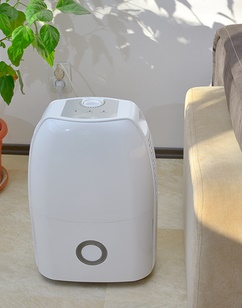
THE PRODUCT:
A dehumidifier collects water vapor from the air, decreasing the humidity of the surrounding area. Dehumidifiers include both portable and whole-home units. Portable dehumidifiers can be easily moved from one room to another, while whole-home dehumidifiers are often used in conjunction with a home’s HVAC system and are designed to be connected to ductwork. Dehumidifiers work by using a refrigeration system to cool air to the point where moisture in the air condenses.
THE STANDARD:
The current standards for dehumidifiers took effect in 2019 and represent energy savings of about 15-25% relative to the previous standards.
In 2023, DOE proposed amended standards for dehumidifiers, which represent energy savings of about 10-37% relative to the current standards.
*The energy efficiency metric, integrated energy factor (IEF), is expressed in terms of liters of water removed per kWh of electricity consumed (L/kWh).
KEY FACTS:
As of 2020, about 17% of US homes used a dehumidifier. The efficiency of dehumidifiers can be improved through the use of more efficient compressors and larger heat exchangers.



